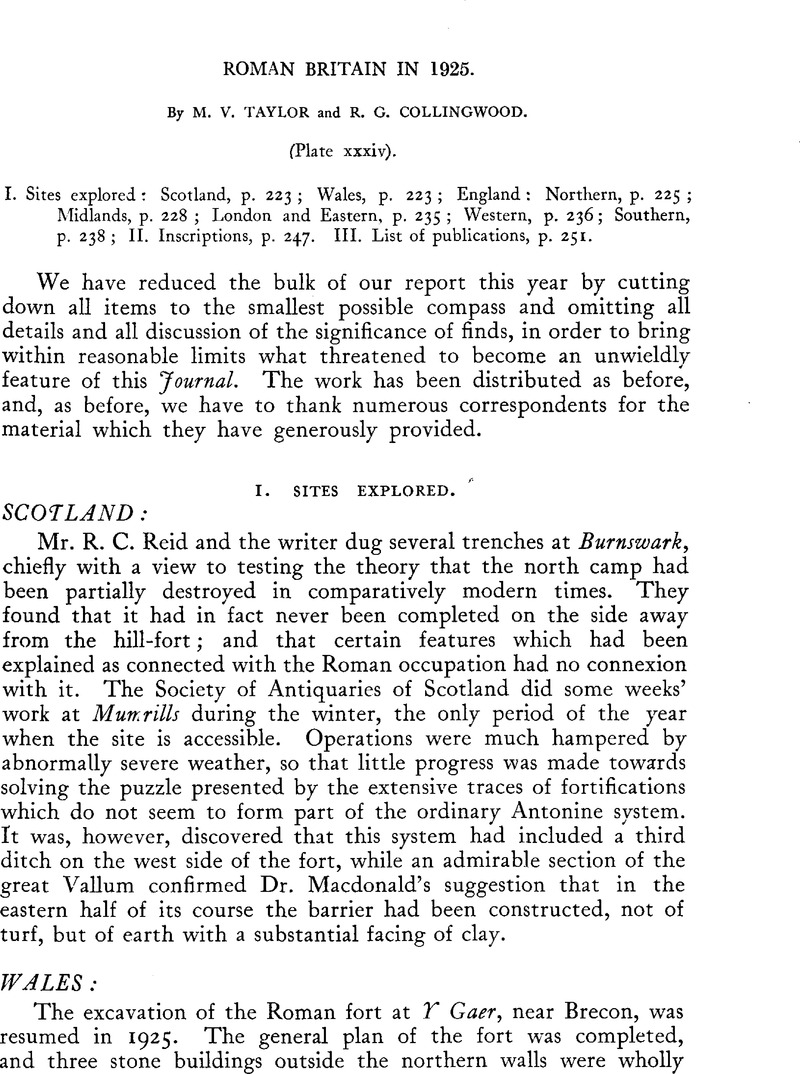No CrossRef data available.
Article contents
Roman Britain in 1925
Published online by Cambridge University Press: 24 September 2012
Abstract

- Type
- Review Article
- Information
- Copyright
- Copyright © M. V. Taylor and R. G. Collingwood 1925. Exclusive Licence to Publish: The Society for the Promotion of Roman Studies
References
page 229 note 1 The following are examples: three with precisely the same design in red, blue and yellow enamel from Wolvershill near Banwell, Somersets. (fig. 99 from a tracing in the Haverfield Library = Vict. Co. Hist. Somerset. i. 357 fig. 99); Leicester (Arch. Journ. xxv, 53)Google Scholar and Woodeaton, Oxon. (Manning Coll. Ashmolean Museum); Irchester and Castor (British Museum) in Northants (Brit. Arch. Assoc. Journ. iii, 251 and fig.; i, 327); Wroxeter, 1925 excavations; Saalburg (Jacobi, , Das Römerkastell Saalburg, 1897, Taf. xix, 15Google Scholar).
page 230 note 1 See the reverses of ‘Virtus Aug.’ or ‘Virtus aeterna’ type of Constantine I, or ‘Debellator’ and ‘Victori gentium barbarr.’ types of Constantine II and Constans I.
page 237 note 1 Mr. Baddeley points out that the diameter of the Chedtworth column (J.R.S. xiv, 231) should be 1 ft. 6 in. not 8 ft. 6 in. as in our 1924 Report.




